When traveling to Sicily, you’ll surely want to visit the city of Catania. This port city on the island’s east coast is a bit gritty, but it’s also packed with history and personality. If you’re keen to get to know Sicily, Catania is a great place to start.
However, as Catania is not as popular as some other major Italian cities, you may not be aware of its highlights. This Catania itinerary will help you understand the best places to visit in Catania before you arrive. It should also make planning easier, as we’ll show you why 3 days in Catania is the perfect amount of time for your visit.
Best Time to Visit Catania
To have a fun and comfortable time in Catania, you should take the time of year into account. In summer, the weather and crowds can make the city less enjoyable. This combination of high season and heat makes July and August a less desirable time to visit.
The best time to visit Catania is late spring or early autumn. If you visit sometime from mid-March to June or mid-September to November, you’ll avoid the city at its busiest while still experiencing good weather. You’re also likely to find better prices and more availability for accommodations and tours during these shoulder seasons.
Alternatively, winter is definitely the cheapest and quietest time to go, but it has its drawbacks. Expect cold weather and reduced hours for attractions.
How to Get Around Catania
While visiting Catania, you’ll likely spend a lot of time moving from one attraction to the next, so it helps to know your options for getting around the city. Catania is quite a large city, but you’ll mostly be sticking to attractions in the city center, which means walking should be suitable for a lot of your sightseeing.
Catania’s public transport network includes buses and a metro system with a single line. Most of the metro runs well beyond the center of the city, but it can get you from Piazza Stesicoro to the main train station and the Museo Storico.
The public buses can also be useful, depending on where you’re going. Tickets cost €1 for a single trip lasting 90 minutes, while a combined bus and metro ticket is €1.20 and lasts 120 minutes.
If you’re arriving in Catania by plane, you’ll want to know how to get from Catania Airport to the city center. Buses run from the airport to the city – as well as other destinations in this corner of Sicily – and are your only option other than taxis. The trip by bus takes around 25 minutes, with departures every 30 minutes and a ticket bought from the driver costing €4.
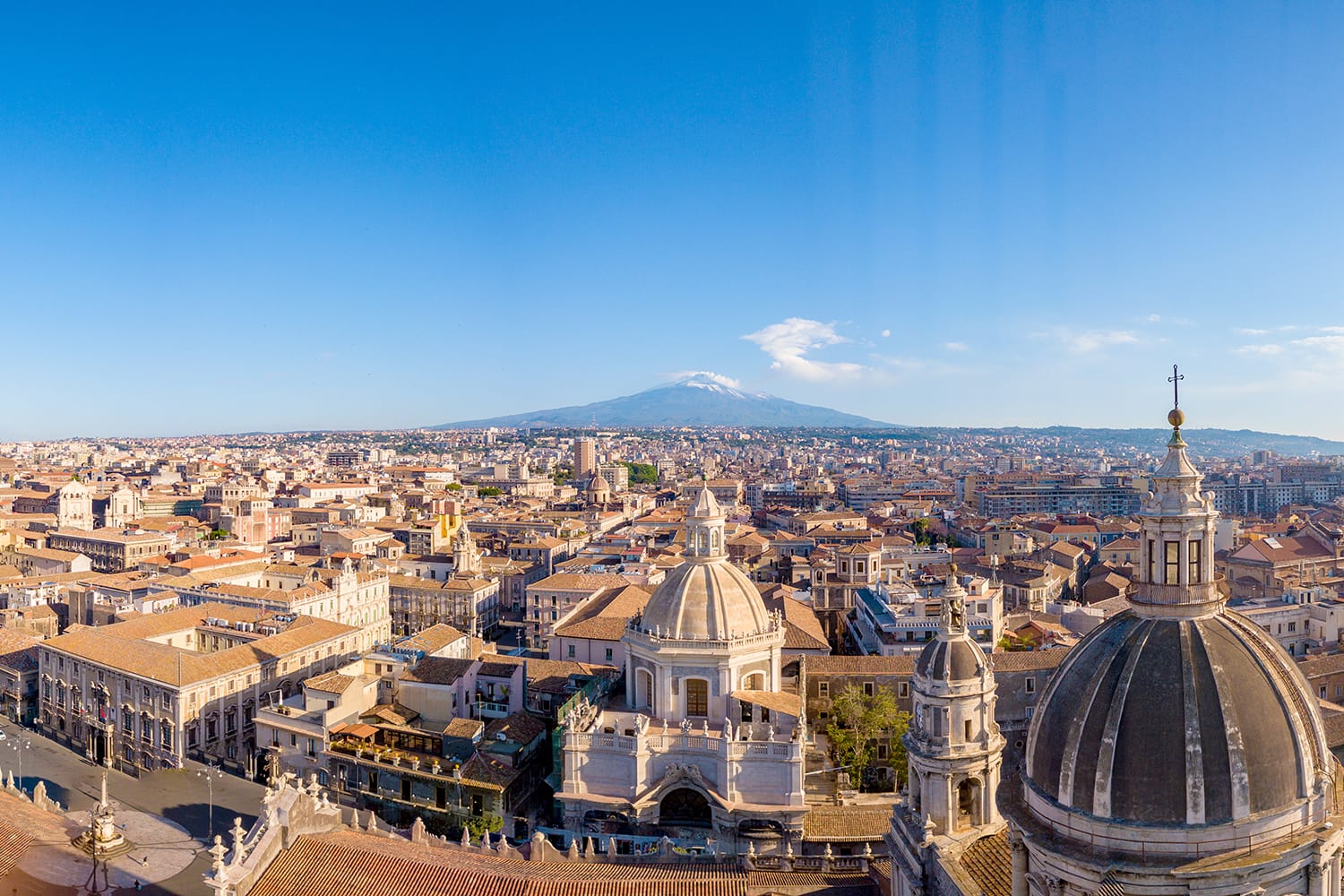
Where to Stay in Catania
As you plan your trip, working out where to stay in Catania is bound to be a high priority. Choosing the right place to stay in the right part of the city can have a really positive effect on your visit. You’ll also want to sort out your accommodations well in advance to ensure you have as many options as possible and secure a booking at a fair rate.
Luckily, the layout of Catania isn’t too challenging. The best places to stay in Catania are those with the best access to the city’s sights. That means finding somewhere in or near the historical center, within walking distance of Via Etnea, Piazza Stesicoro, or Piazza del Duomo.
To spend your stay in luxury, the Palace Catania is the way to go. In addition to its spacious rooms, this four-star hotel on the street of Via Etnea boasts a rooftop bar and restaurant with views of Mount Etna.
If you want both comfort and affordability, the Etna Suite Group is a great option for you. Despite its central location, this guesthouse has little street noise, and the friendly hosts prepare an excellent breakfast, which is included in the rates.
You can also find some great places to stay on Airbnb, which is even better value when you get up to $55 off your next booking by using our link.
If your main concern is saving money, The Yard Hostel is the place for you in Catania. This hostel offers surprisingly large dorm rooms and comfortable beds, with a shared kitchen and terrace.
For more accommodation options in Catania check out Booking.com. They continuously offer the best rates and their custom service is on point.
The Perfect 3-Day Catania Itinerary
As with all the great cities you can visit in Italy, you’ll encounter a variety of attractions in Catania. With three days there, you should have no problem fitting in the best of Catania and getting a feel for the city – particularly if you follow this itinerary, which shows you all the best things to do in Catania.
Following this guide, you’ll see attractions scattered throughout the city’s historical center, even those on its edges. You’ll also have enough time to make a day trip to some of the phenomenal Sicilian destinations nearby.
However, before we get to our Catania itinerary, we just wanted to remind you to purchase travel insurance. You never know what will happen and, trust us, you do not want to get stuck with thousands of dollars in medical bills. As a wise man once said, “If you can’t afford travel insurance, you can’t afford to travel.” So don’t leave home without it.
SafetyWing offers travel insurance for only about $10 a week, making it a no-brainer to get. You can get a quick, non-binding quote below:

SafetyWing is, of course, not the only option available. Two other popular alternatives are World Nomads and Heymondo.
Having addressed that important matter, we can now properly dive into our Catania travel itinerary. Below, you’ll find a thorough outline of what to do in Catania in 3 days in order to experience different aspects of this complex city.
Day 1 in Catania
Upon arriving in Catania, you’ll want to start with the historic city center, where you’ll see many of the main attractions.
Piazza del Duomo
The easiest place to begin your first day in Catania is Piazza del Duomo. This is Catania’s main square, lying at the heart of its historic center.
Looking around the square, you’ll notice quite a few impressive buildings, each a fine example of Sicilian Baroque architecture. You’ll also see two palaces sitting at opposite ends of the square: the Palazzo dei Chierici and the Palazzo degli Elefanti, which currently houses the Catania Town Hall. In the middle of all this is the Elephant Fountain, an elegant symbol of the city.
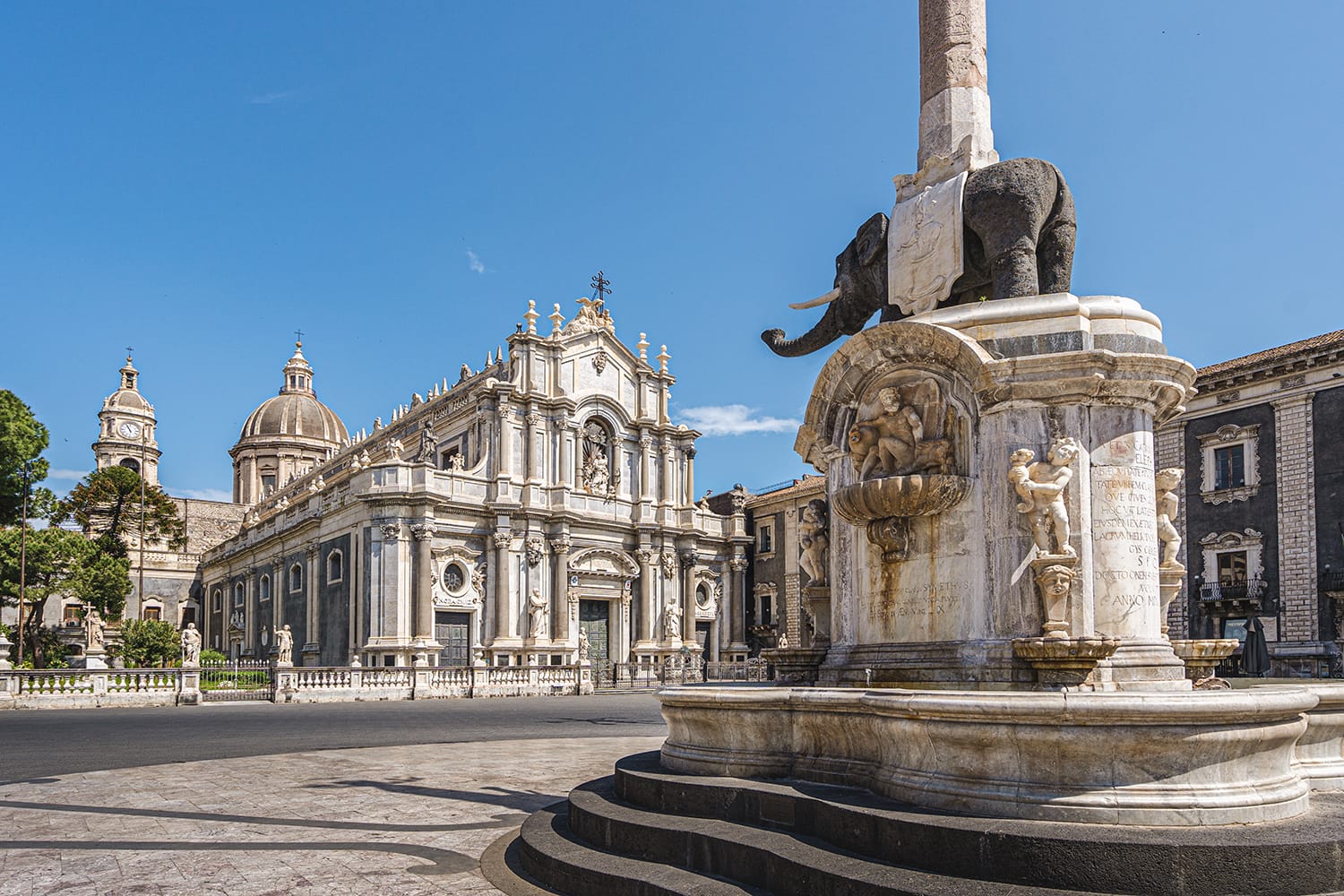
Cathedral of St. Agatha
One more landmark in Piazza del Duomo is the Catania Cathedral (or Duomo di Catania, giving the square its name) of St. Agatha. If you visit only one church in Catania, make it this one.
Repeatedly destroyed and rebuilt since the 11th century, the cathedral dates back to 1711 in its current iteration and features the Baroque architecture you’ll see throughout the square. Some parts of its interior are rather restrained in their design, which only makes the opulent apse and side chapels stand out more.
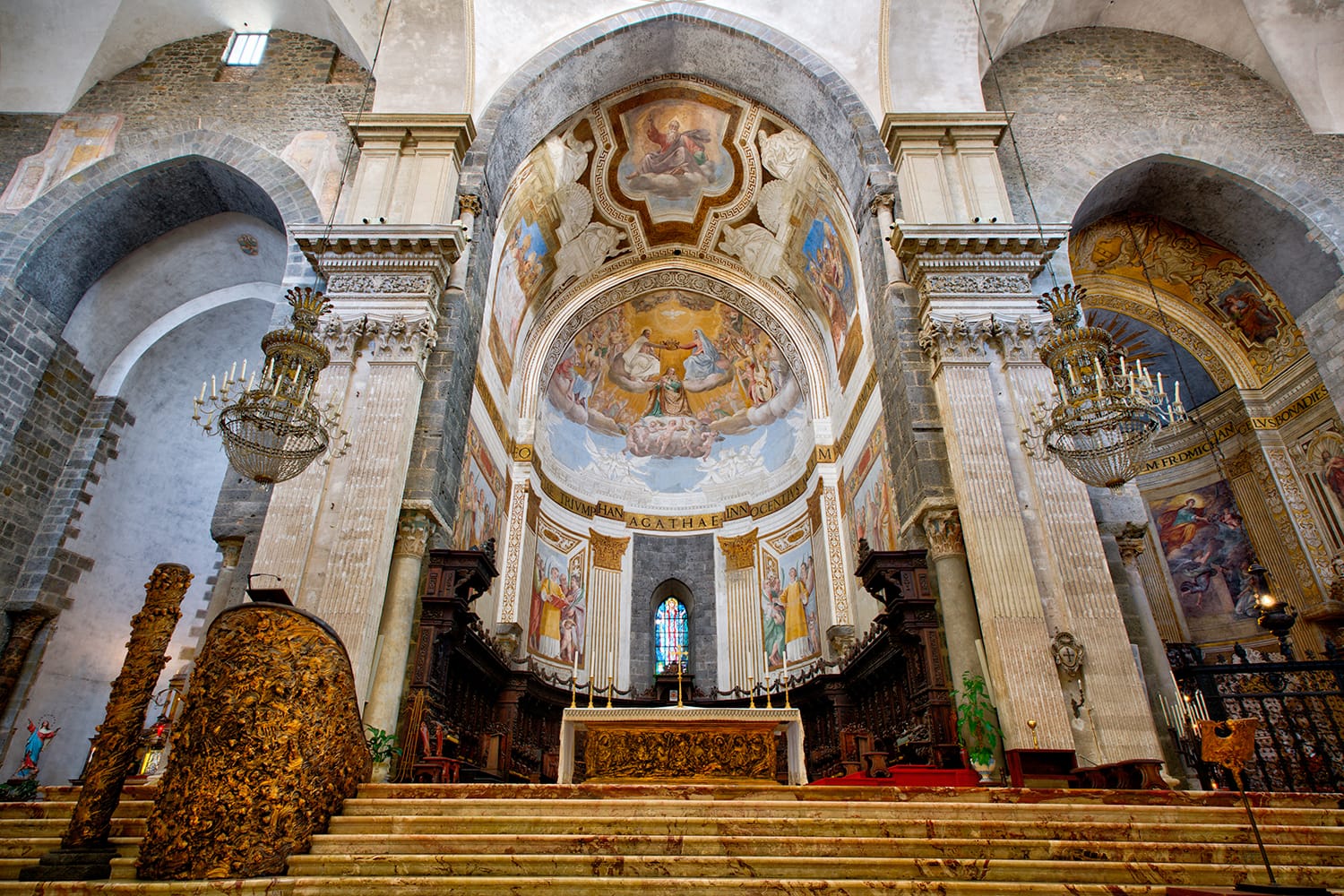
Catania Fish Market
Just around the corner from Piazza del Duomo, you’ll find the Catania Fish Market in a sunken square, displaying a variety of seafood for sale on its tables. Up on the streets overlooking the square, you’ll see plenty of people watching the lively market action from the railing, not to mention a row of food stalls selling fruit, vegetables, and other non-fish products.
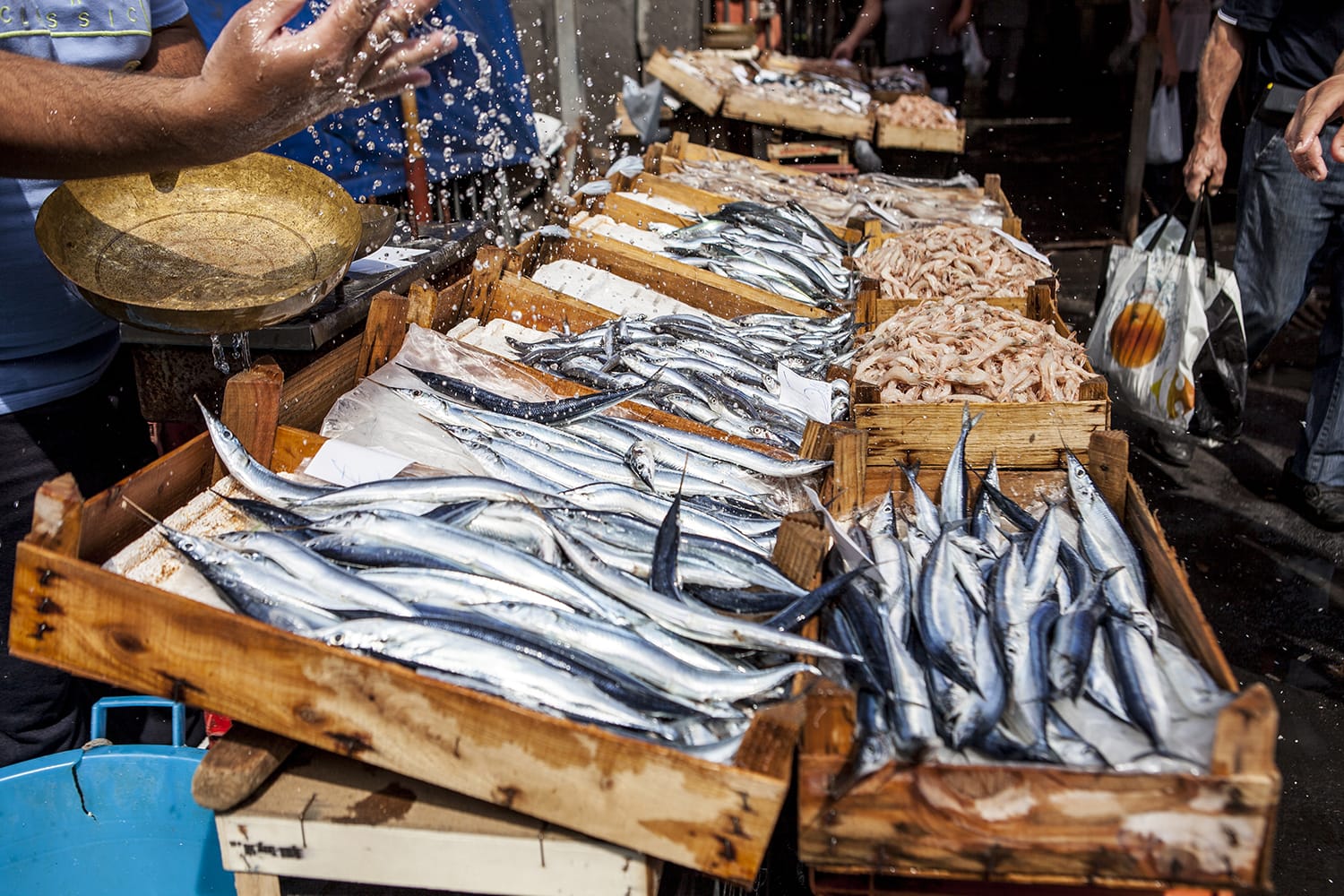
Roman Theatre and the Odeon
The impressive ruins of the Roman Theater and Odeon, which date back to 300 B.C., are hidden from view of the street. But walk through the small museum and you’ll enter an arena that held up to 7,000 spectators in its prime. You can wander the rows of seating, venture into the outer hallways, and see the remains of the neighboring theater, the smaller Odeon.
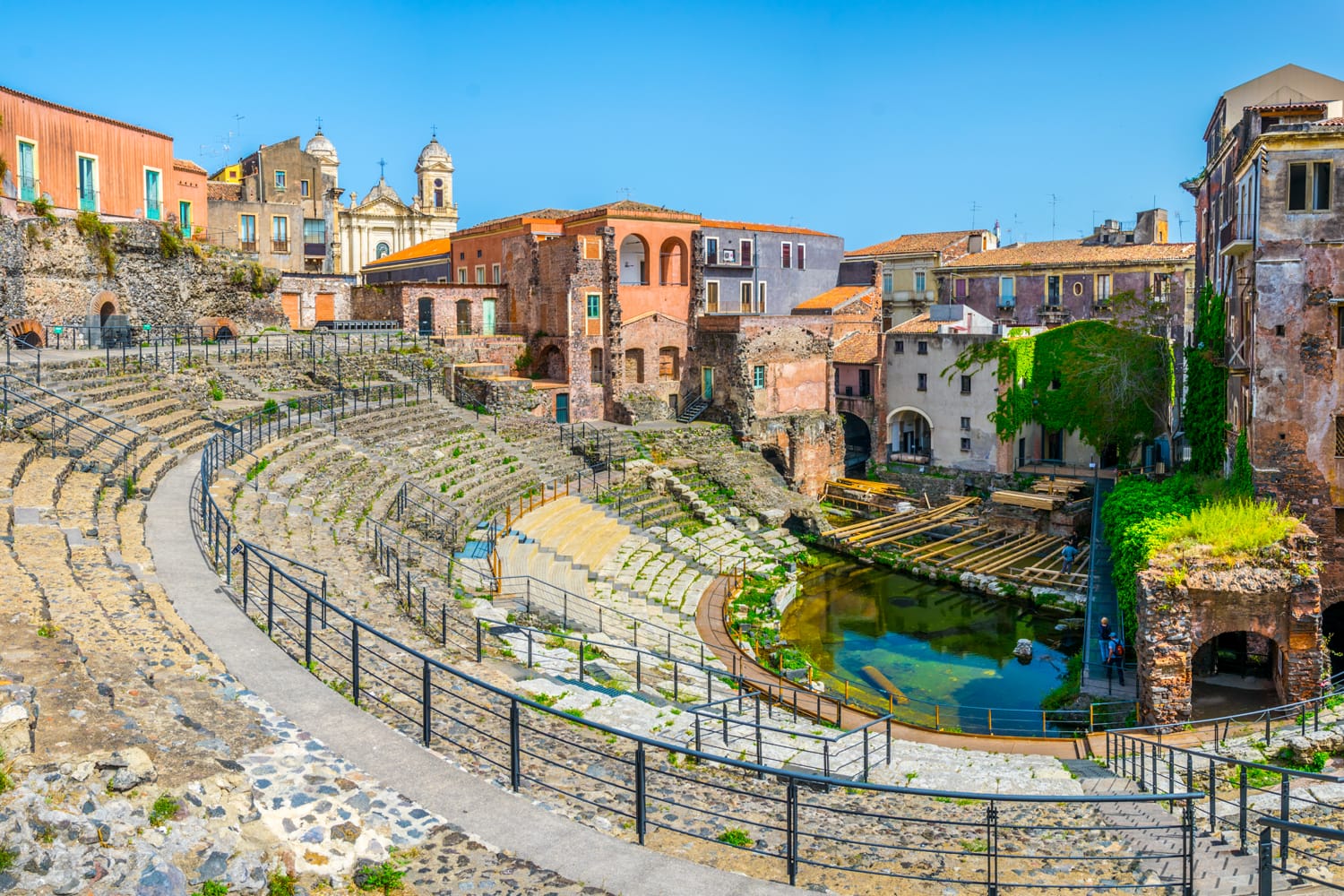
Via Etnea Promenade
Heading back toward the city center, you’ll soon find yourself in Piazza Università (or University Square), one of many squares along the endless street of Via Etnea. After admiring the picturesque buildings in the square, head out onto Via Etnea to see Catania’s premier shopping promenade.
You’ll find all manner of shops and restaurants along this major road, not to mention plenty of buildings with a look of faded grandeur. Traffic along the promenade is usually minimal, making it a pleasant place to walk and window-shop.
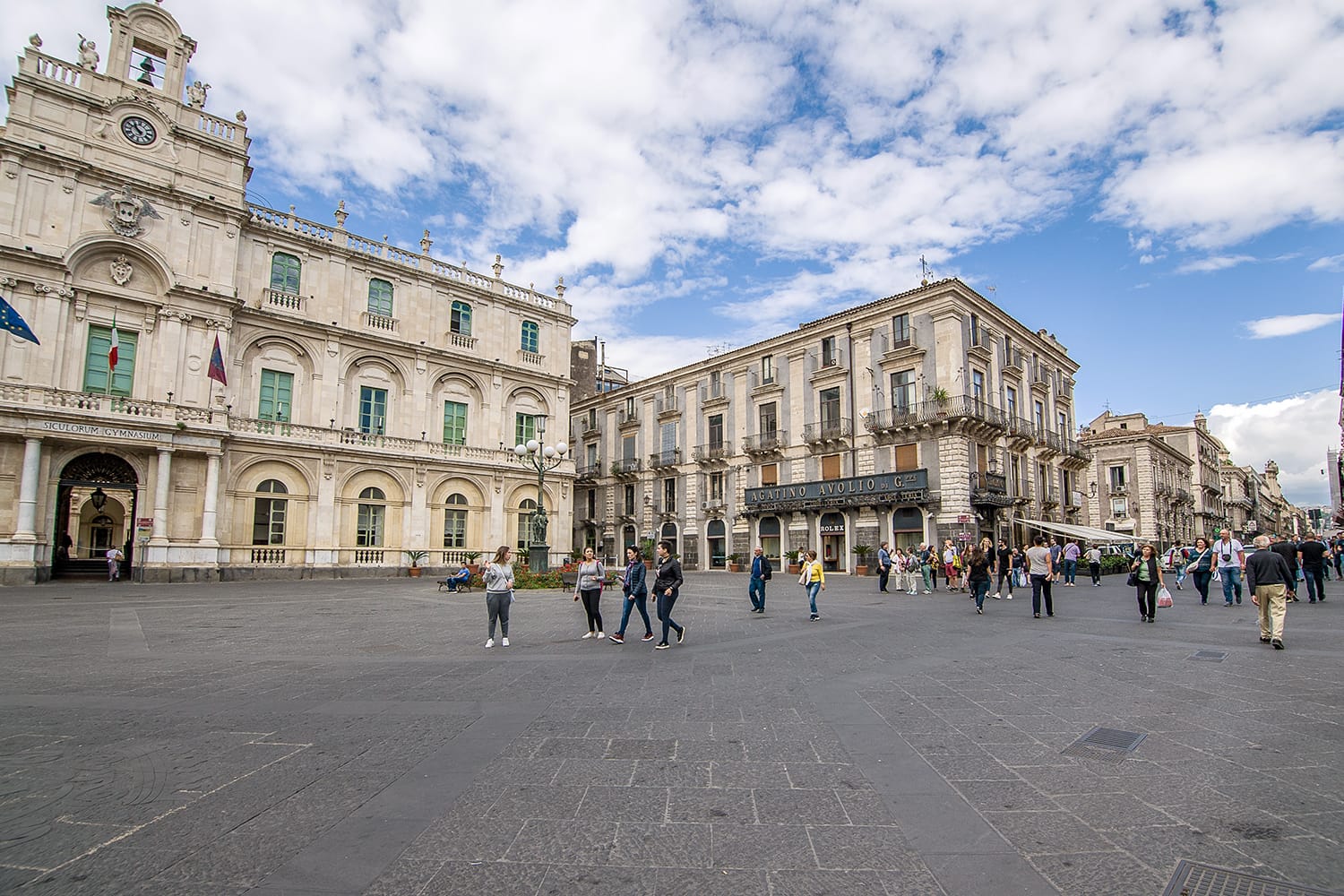
Roman Amphitheater
After walking down Via Etnea for a while, you’ll spy your next stop, the ruins of the Roman Amphitheater of Catania. Though these ruins sit below street level in the heart of Catania’s historic center, the theater actually sat on the edge of ancient Catania.
Only a small part of the theater remains, but this ancient structure was once the largest amphitheater on the island of Sicily, with a likely capacity of 15,000 spectators. You can either do a lap around the ruins and look down into them or pay to walk through them.
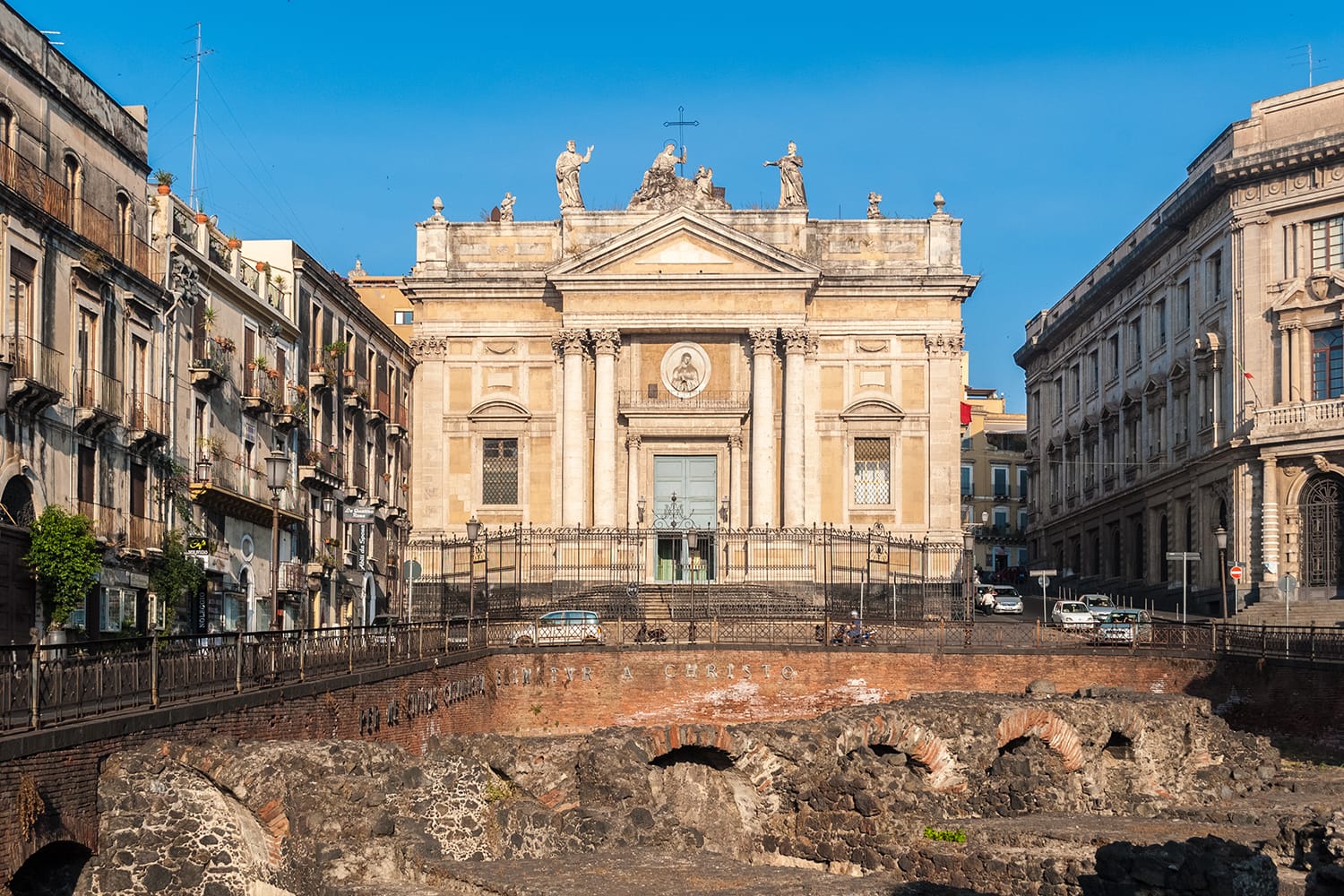
Villa Bellini
Continuing down Via Etnea, you’ll eventually reach the ornate gardens of Villa Bellini. This is the oldest public park in Catania – and quite a pleasure to explore.
Entering from the bottom, you’ll head up an elegant staircase to the park’s fountain and floral clock. Farther up are carefully trimmed hedges; then, at the top, you’ll find a gorgeous pavilion made of wrought iron.
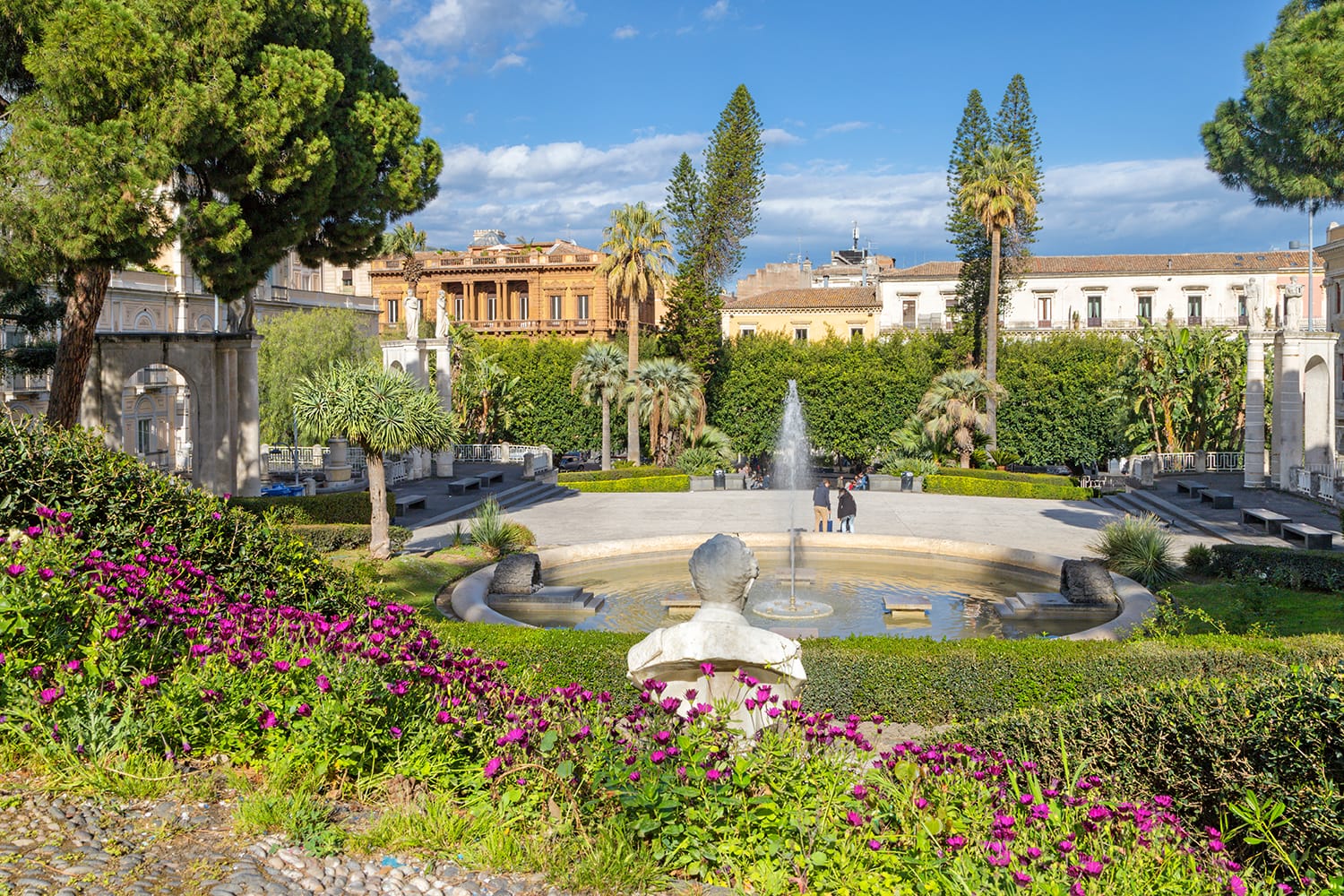
Day 2 in Catania
On your second day in the city, you’ll venture farther from the heart of Catania to the south, east, and west.
Teatro Massimo Bellini
Taking pride of place in the circular Piazza Vincenzo Bellini, the Teatro Massimo Bellini is a gorgeous opera house built at the end of the 19th century. As impressive as the building is from the outside, it’s even more lavish inside. A guided tour will show you the theater’s foyer, hall, stage, and royal box.
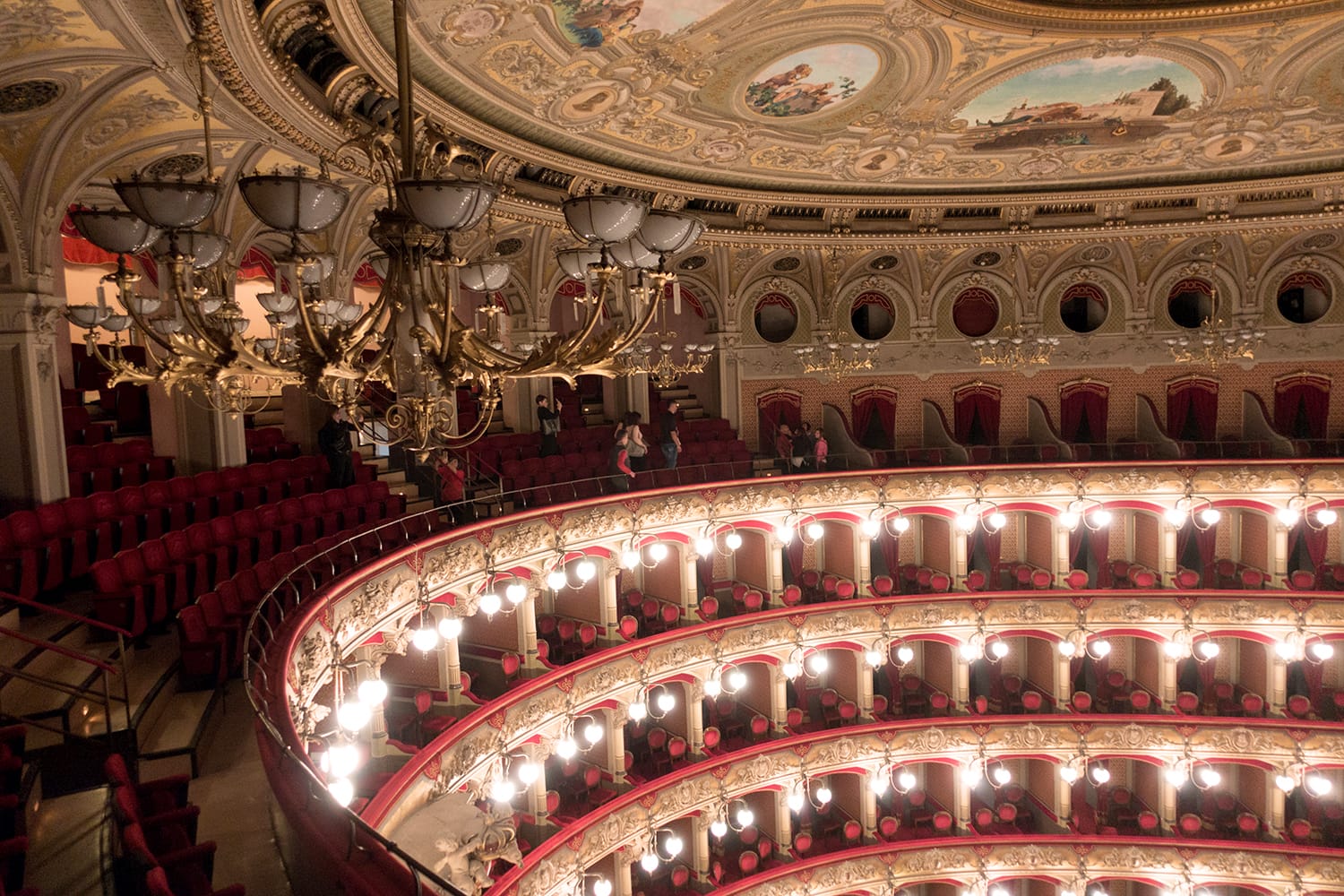
Via dei Crociferi
There are plenty of city streets to explore in Catania, but one not to miss is Via dei Crociferi. Found west of Piazza Università, this scenic street is lined with three churches that date back to the 18th century. At the southern end lies the Arco di San Benedetto, a Baroque archway that completes the grand appearance of the street.
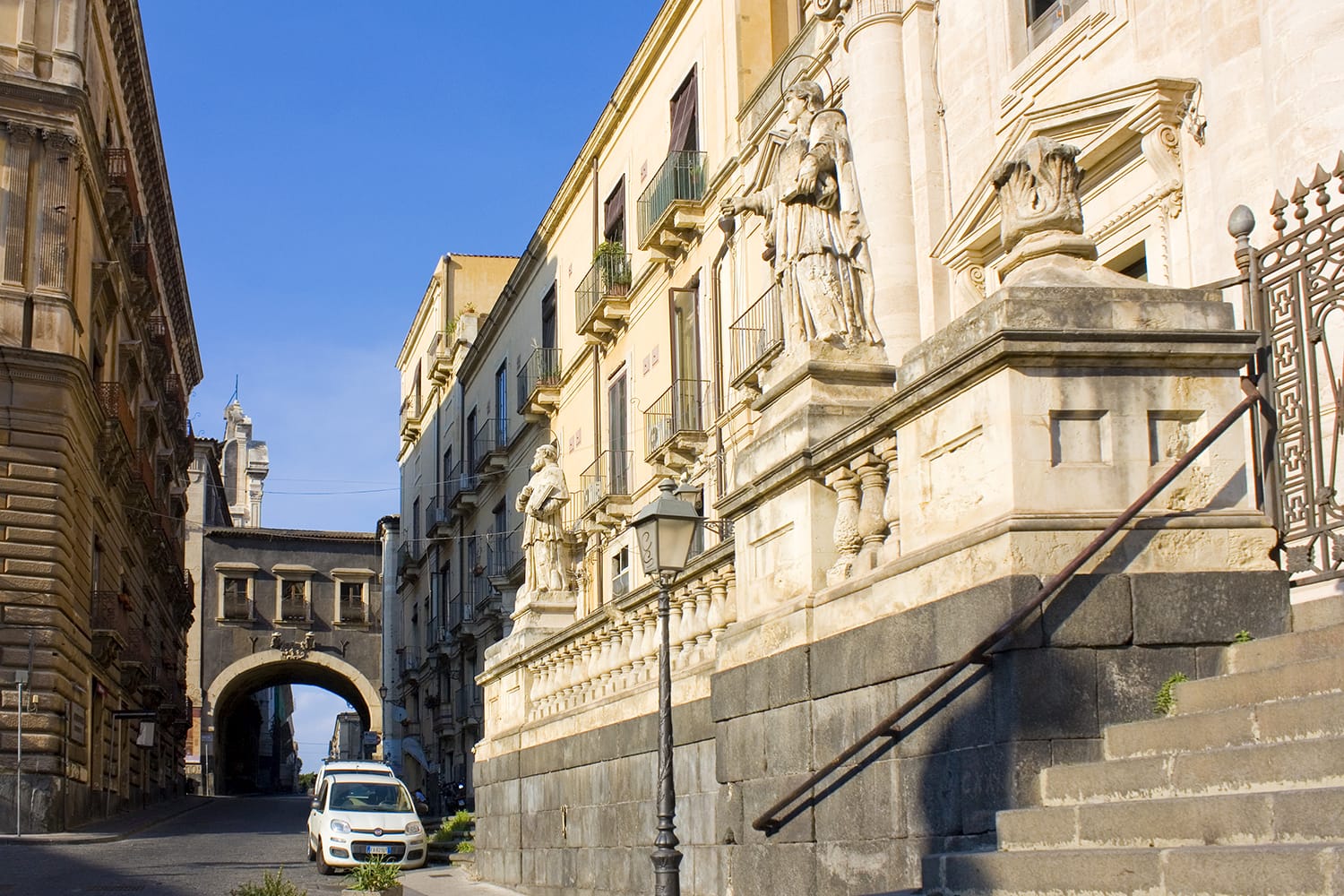
Monastery of San Nicolò l’Arena
Heading uphill away from Via dei Crociferi, you’ll come across your next stop, the immense Monastery of San Nicolò l’Arena. This is the second-largest Benedictine monastery in Europe and another fine example of Catania’s UNESCO-recognized collection of Baroque architecture.
This 16th-century monastery is now part of the University of Catania campus, and you’re free to go inside and check it out. Don’t miss the beautiful marble cloister through the back.
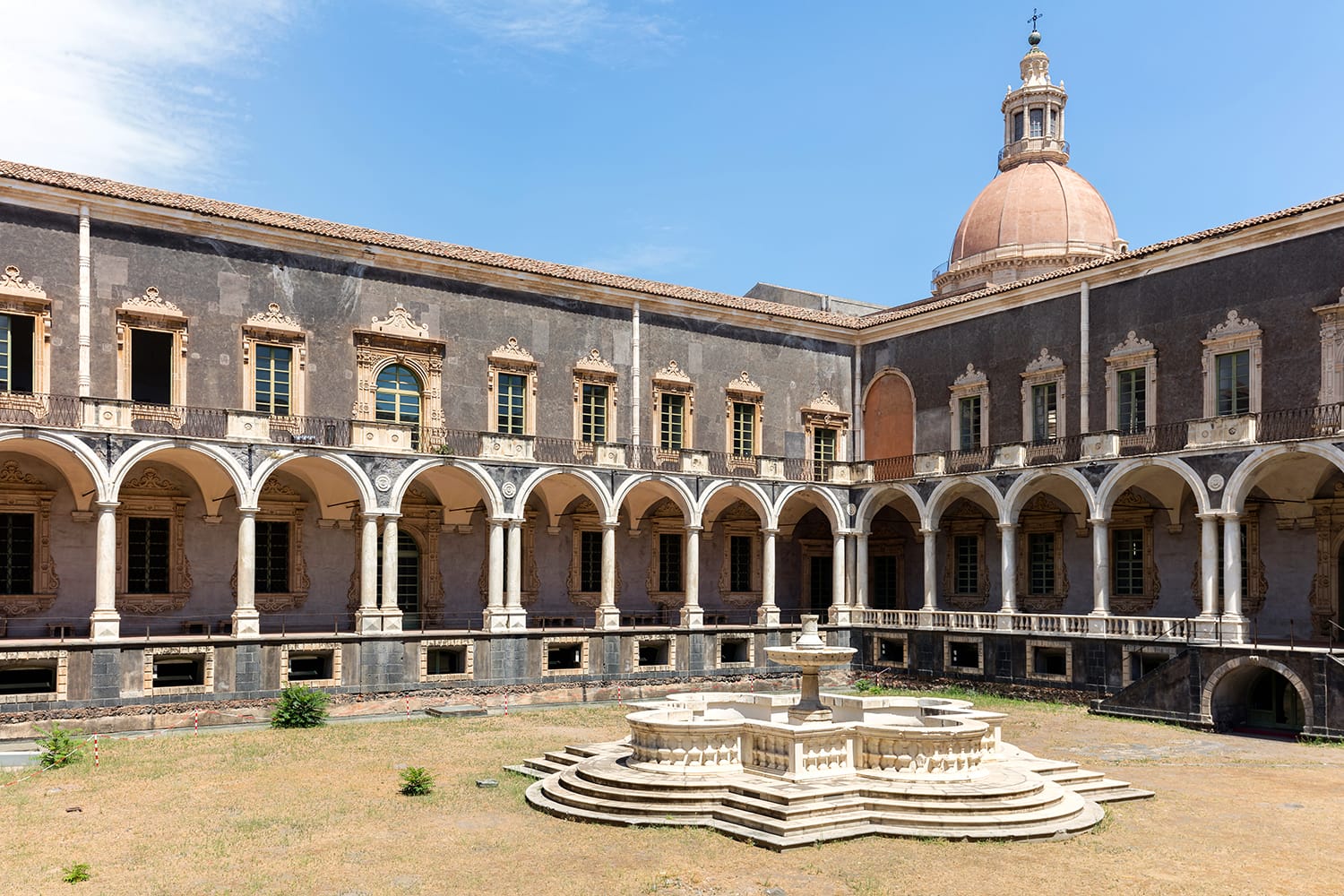
Castello Ursino
It’s time to see a new part of the city, so venture south until you reach Castello Ursino. This striking medieval fortress was built in the 13th century as the royal castle of the Kingdom of Sicily. The castle played a key role in the rebellion known as the Sicilian Vespers, removing Charles of Anjou as king.
Castello Ursino has weathered centuries and natural disasters quite well. It now hosts the Civic Museum, where you can see historical artifacts and artwork from Catania and the wider region.
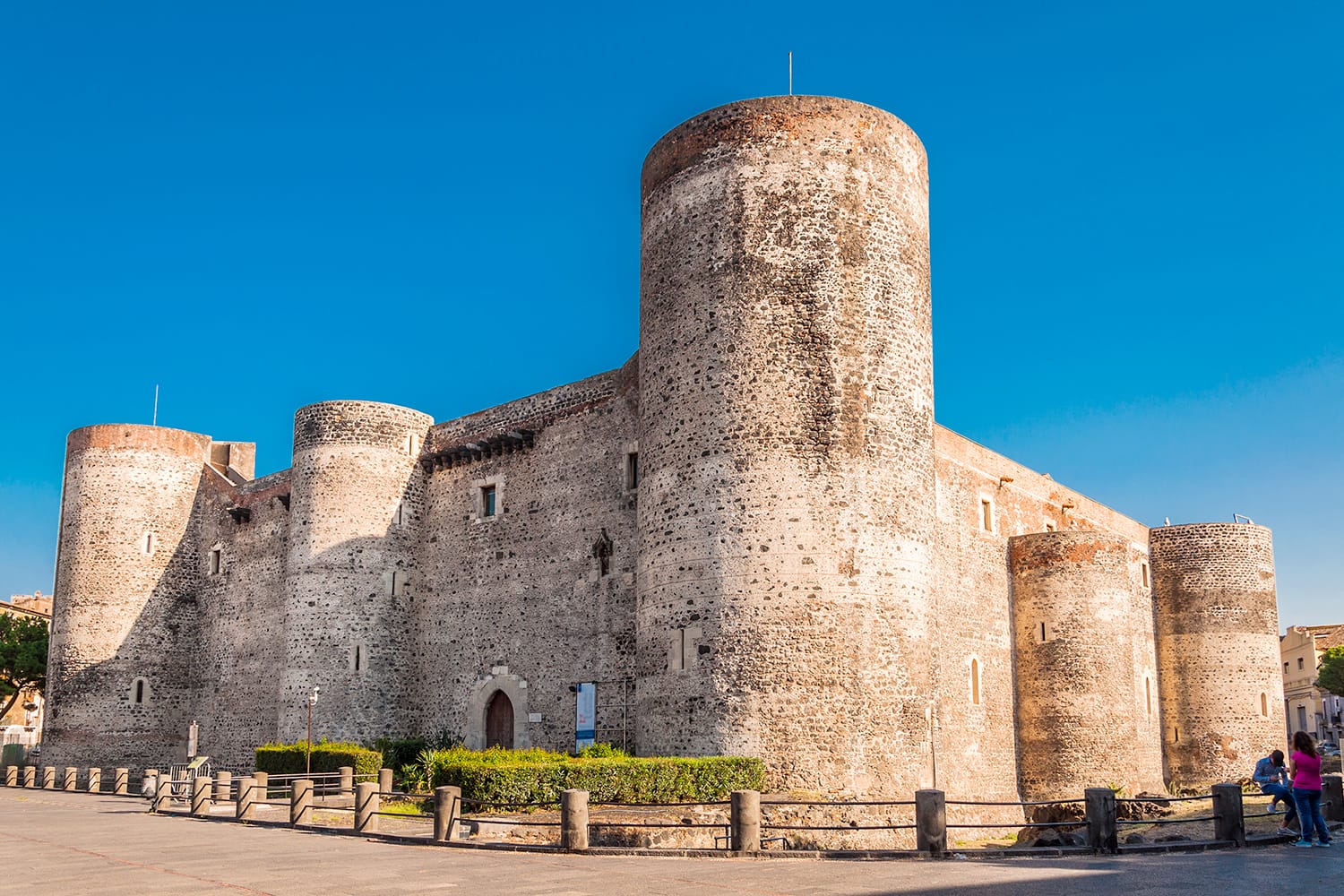
Piazza Carlo Alberto Market
Walking back into the historical center, find your way to the lively street of Via Pacini. This street nicely reflects the atmosphere of Catania as a whole, with plenty of bars and snack joints. But the big draw here is the busy local market at the end of the street in Piazza Carlo Alberto. You’ll find all sorts of food and items for sale here, in the shadow of the beautiful Sanctuary of the Madonna del Carmine.
Recommendation: Discover the flavors, aromas, and gastronomic traditions of Catania on this amazing Catania Street Food tour. A must for any foodie.
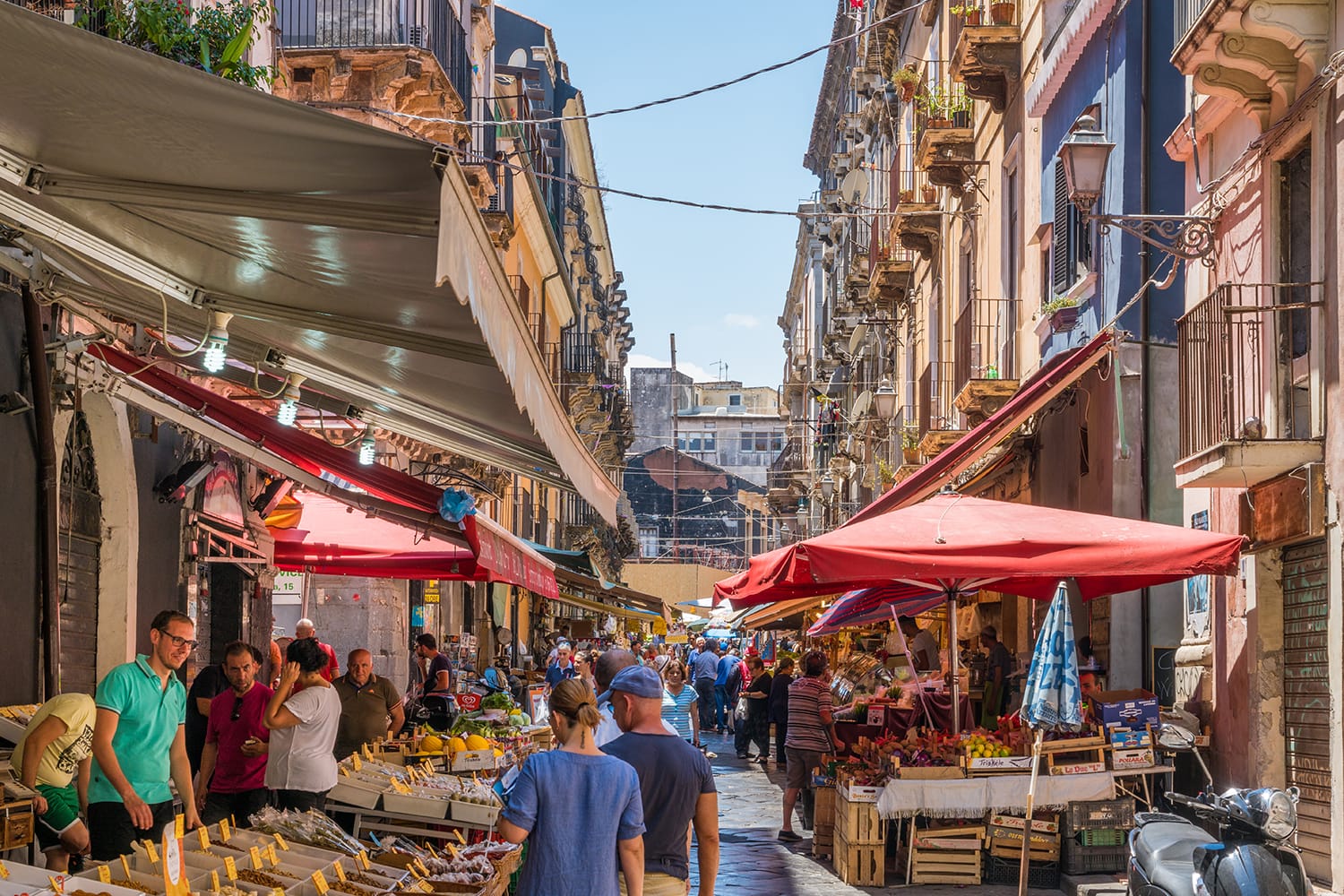
Museo Storico dello Sbarco in Sicilia 1943
Finish the day’s sightseeing at the Le Ciminiere museum complex. This area north of the main train station is actually an old sulfur refinery. Its most interesting museum is the Museo Storico dello Sbarco in Sicilia 1943, where you can learn about the Allied invasion of Sicily through its immersive exhibits.
Day 3 in Catania
To finish your 72 hours in Catania, set your sights on the other fantastic destinations in this part of Sicily. Once you’ve seen Catania’s best attractions, it’s time to broaden your horizons with a day trip from Catania. While there are plenty you can make, here are the most popular.
1. Mount Etna
The most obvious candidate for a day trip from Catania is Mount Etna, which you’ll have seen looming on the city’s horizon. The most active volcano in the world, Mount Etna is easy to reach from Catania and a remarkable place to explore. Despite its habit for violent eruptions, it remains one of Sicily’s most popular destinations.
A trip up Mount Etna typically involves multiple stages with their own points of interest, ultimately taking you 3,326 meters high to its summit. Coming from Catania, you’ll take the southern approach that starts outside the Hotel Rifugio Sapienza, just under 2,000 meters in elevation – where you’ll already see craters and lava flows across the bleak landscape.
Next, you have the choice of hiking or taking a cable car up to a lava cave at 2,500 meters. From there, you can hike up to the craters at 2,900 meters or have a guide take you all the way to the craters by the summit. Either way, you’ll see a desolate but awe-inspiring volcanic landscape up close.
You can book a guide tour to Mount Etna here.
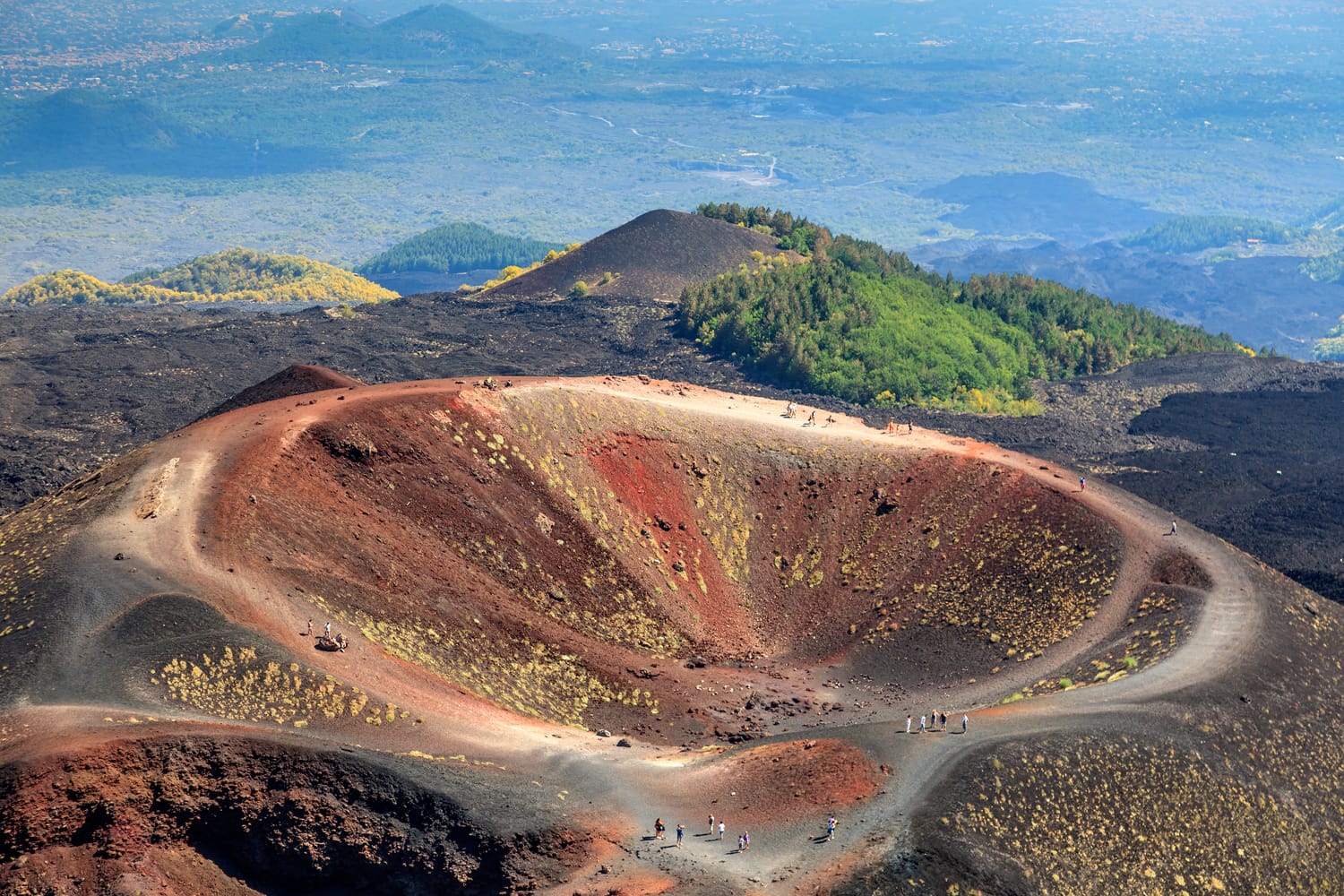
2. Taormina
On the coast north of Catania is the beautiful and immensely popular town of Taormina. Resting on a hillside with wonderful views of the sea, Taormina has a little of everything for visitors.
Begin your visit by entering the town center through the ancient Messina Gate and strolling along its main pedestrian street. As you walk, you’ll encounter plenty of cafes, restaurants, and stores selling Sicilian produce and handicrafts.
Find your way to the Villa Comunale to enjoy some wonderful views of the coast below, as well as Mount Etna in the distance. Above these municipal gardens, you’ll find the town’s most iconic landmark, the mighty Teatro Antico. This ancient Greek theater still appears to be in decent shape and offers even better views than the gardens.
One last panoramic outlook to enjoy is the Belvedere di Via Pirandello. From this viewpoint, you can gaze down at the picture-perfect Isola Bella and its beaches.
You can combine a visit to Mount Etna and Taormina with this amazing guided tour.
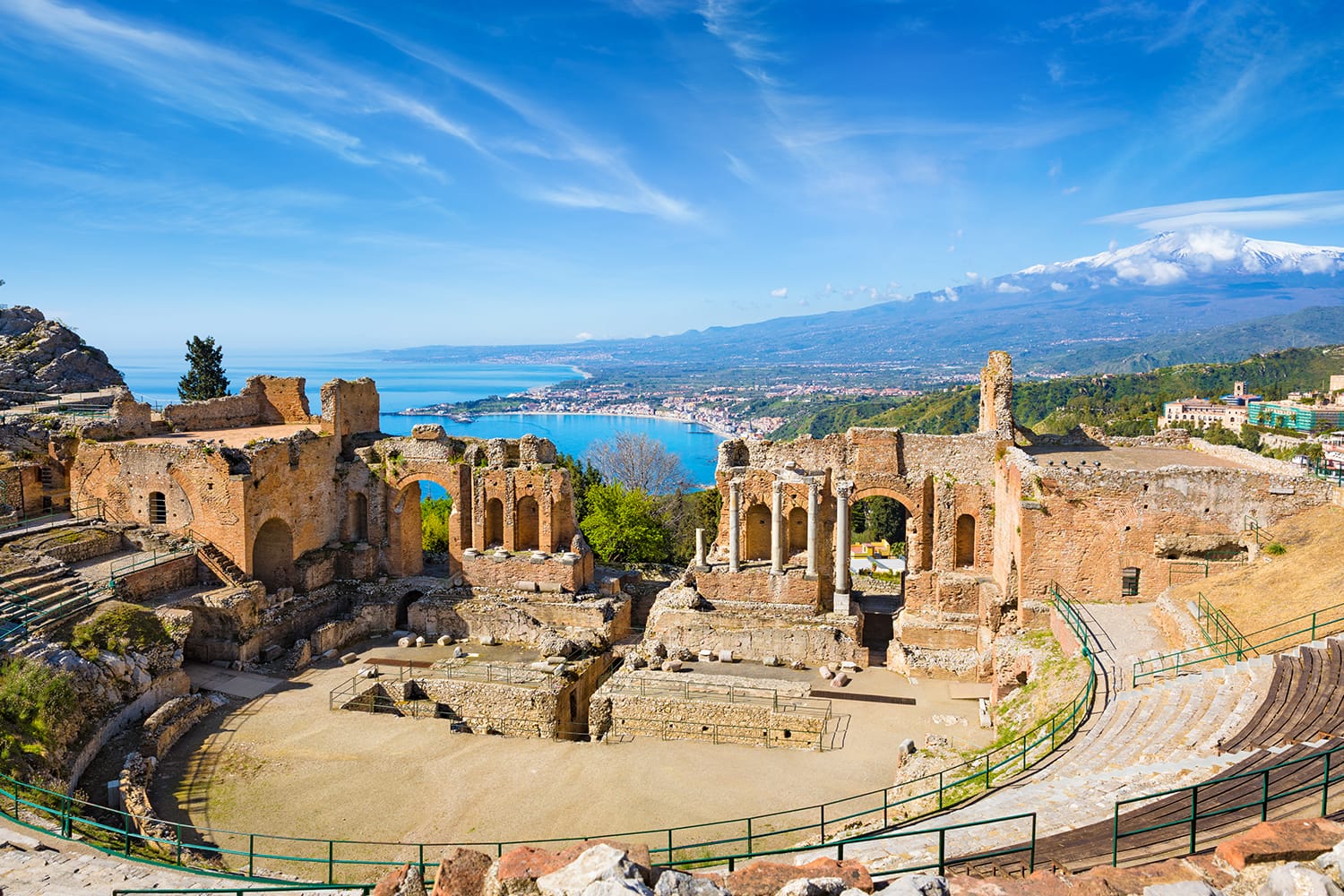
3. Syracuse
There’s plenty of history to explore in Sicily, and one of the most enjoyable places for it is the seaside city of Syracuse. A day trip to Syracuse allows you to escape the bustle and grit of Catania for somewhere a little calmer.
Rather than making a beeline for the city’s historical center, begin by visiting the incredible Neapolis Archaeological Park. This expansive site is home to an interesting collection of landmarks, the star attraction being its well-preserved ancient Greek theater. You can also see an Imperial Roman amphitheater, an ancient quarry used to build Syracuse, and a uniquely shaped cave called “the Ear of Dionysius.”
On the far side of the city, you’ll find the island of Ortygia, the historic center of Syracuse. Whether you walk around the waterfront promenade or wander the quiet and old-fashioned backstreets, it’s hard not to settle into a leisurely pace here. Soon enough, you’ll arrive at Piazza del Duomo, Ortygia’s main square, which is home to several palaces and the Cathedral of Syracuse. Right at the end of the island lies Castello Maniace, one of the city’s former medieval citadels.
You can book a guided day tour to Syracuse here.
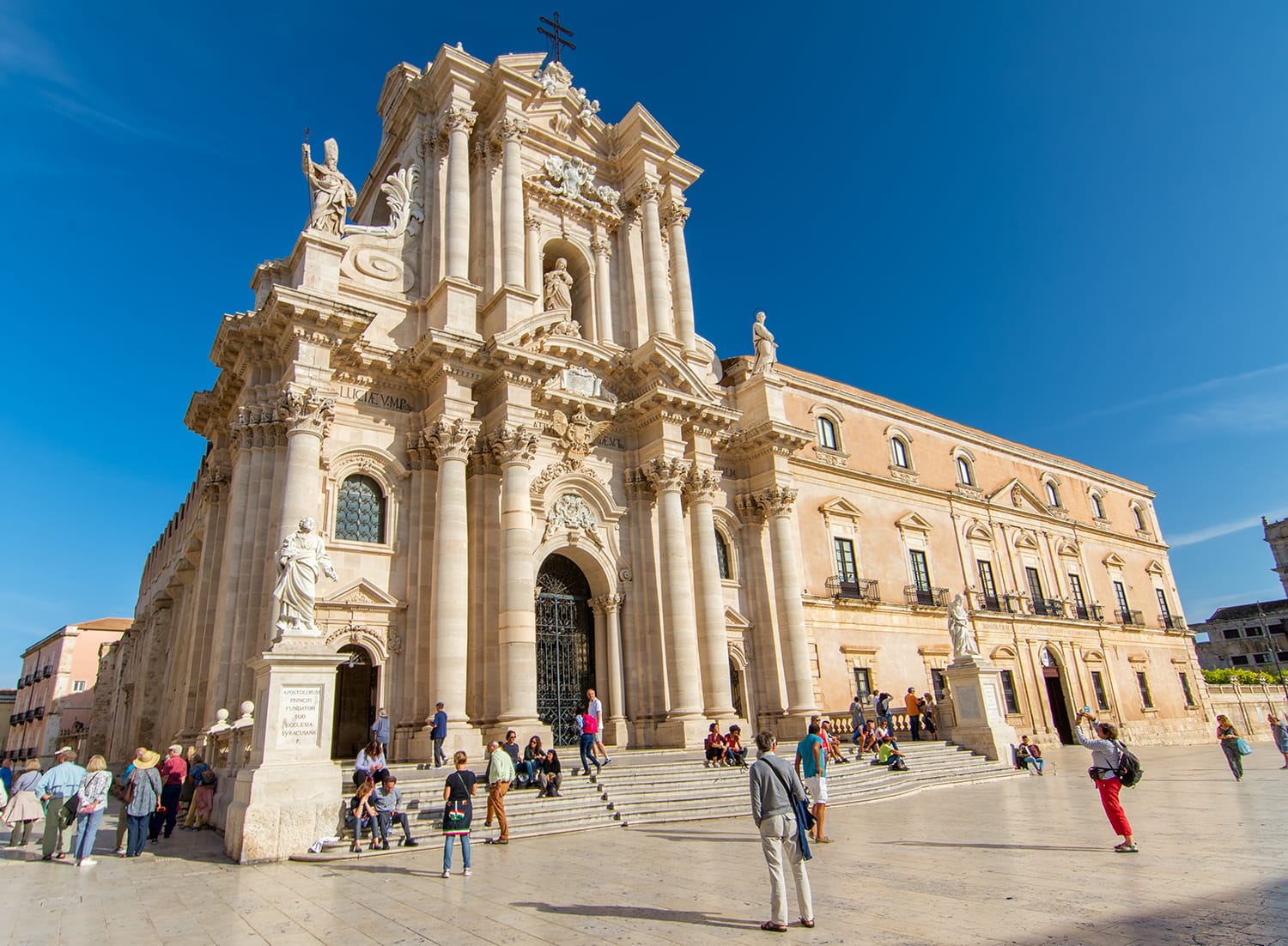
So ends our guide to sightseeing around Catania in 3 days. You should now feel fully prepared to make the most of your time in this underrated city!
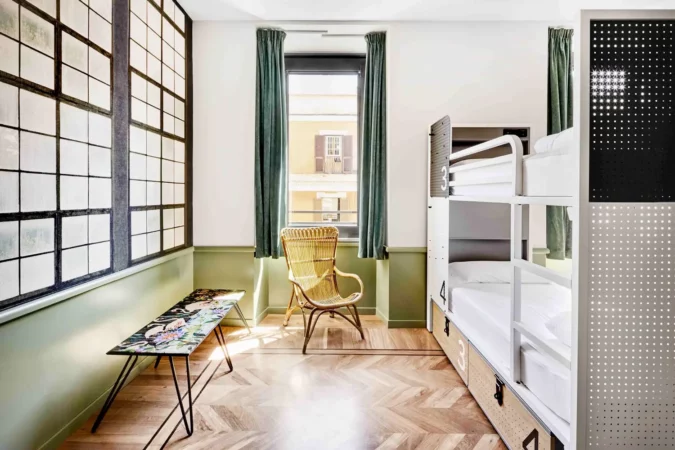


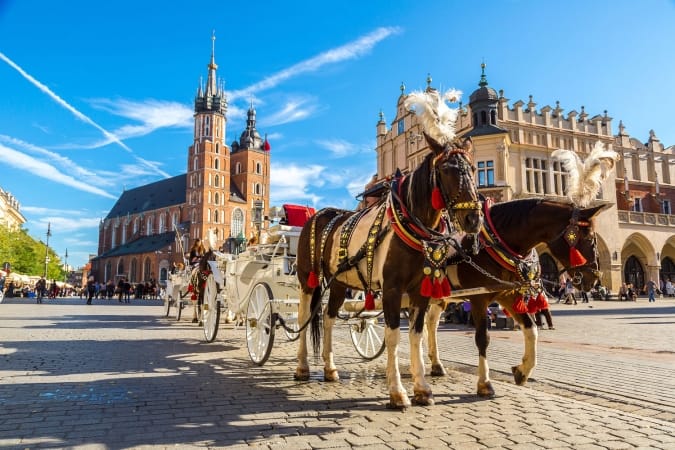
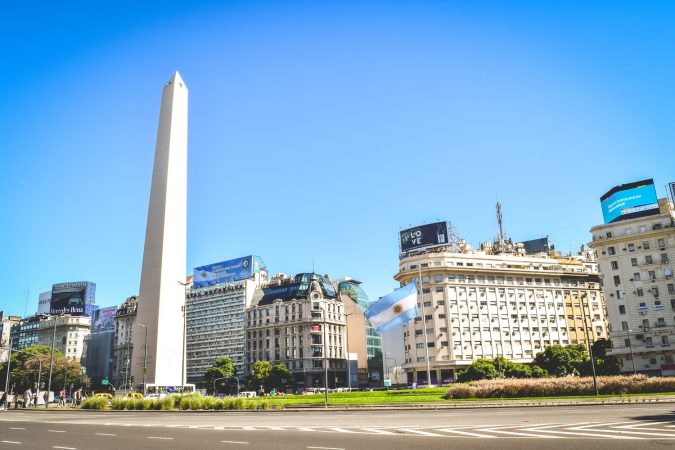
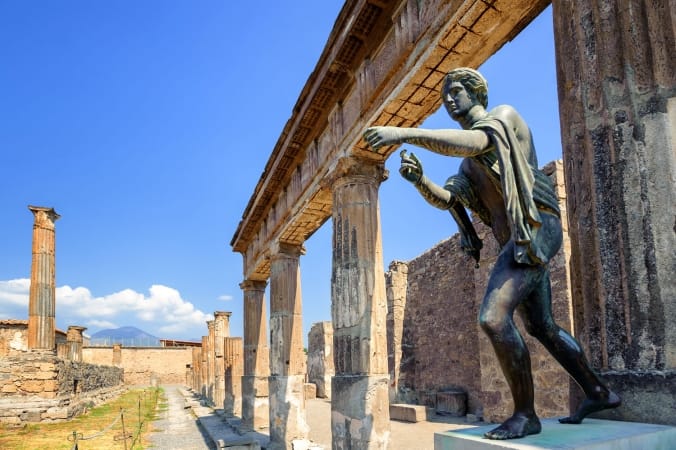

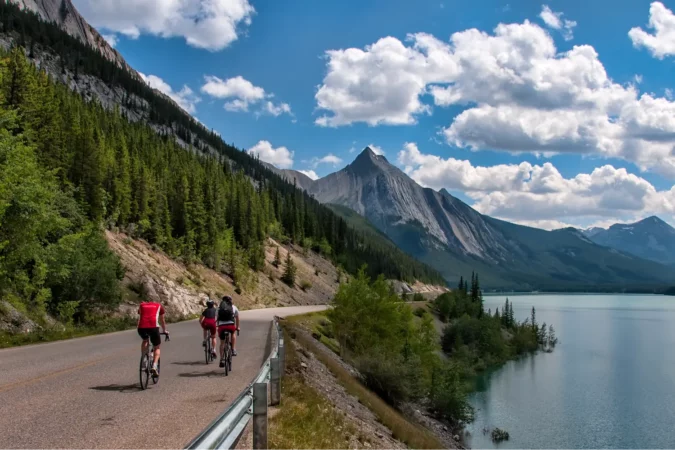
Comments